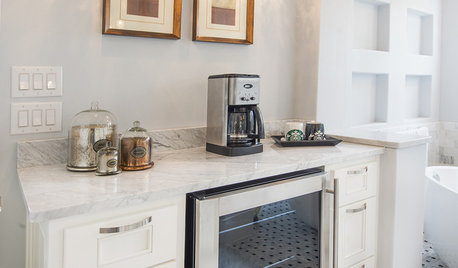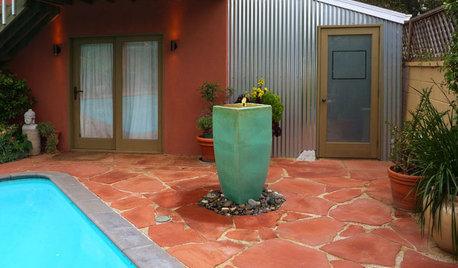Newbie Nepenthes owner... please help ID
jabby_77
16 years ago
Related Stories

HOME OFFICESQuiet, Please! How to Cut Noise Pollution at Home
Leaf blowers, trucks or noisy neighbors driving you berserk? These sound-reduction strategies can help you hush things up
Full Story
VACATION HOMESPatience Pays Off for Owners Renovating Their Beach Condo
A Jersey Shore unit gets a bright new look, a more functional layout and increased space for extended family
Full Story
HOUZZ TOURSHouzz Tour: A House as Individual as Its Owner
Architects create a home like no other for a collector who’s passionate about books, art, literature, science and design
Full Story
BEFORE AND AFTERSOwners Find Their Bliss in a Wine Country Ranch House
Going from cramped and dark to open and bright, a California home lands 600 extra square feet and a gorgeous new outdoor living room
Full Story
BATHROOM DESIGNUpload of the Day: A Mini Fridge in the Master Bathroom? Yes, Please!
Talk about convenience. Better yet, get it yourself after being inspired by this Texas bath
Full Story
SUMMER GARDENINGHouzz Call: Please Show Us Your Summer Garden!
Share pictures of your home and yard this summer — we’d love to feature them in an upcoming story
Full Story
DECORATING GUIDESPlease Touch: Texture Makes Rooms Spring to Life
Great design stimulates all the senses, including touch. Check out these great uses of texture, then let your fingers do the walking
Full Story
BEFORE AND AFTERSMore Room, Please: 5 Spectacularly Converted Garages
Design — and the desire for more space — turns humble garages into gracious living rooms
Full Story
DECORATING GUIDES10 Bedroom Design Ideas to Please Him and Her
Blend colors and styles to create a harmonious sanctuary for two, using these examples and tips
Full Story






bob123how
jonocross
Related Professionals
Hyattsville Landscape Architects & Landscape Designers · Rossville Landscape Architects & Landscape Designers · Saint Matthews Landscape Architects & Landscape Designers · West Chester Landscape Architects & Landscape Designers · Westwood Landscape Contractors · Bowie Landscape Contractors · Commack Landscape Contractors · Fort Mill Landscape Contractors · Middletown Landscape Contractors · Painesville Landscape Contractors · Sammamish Landscape Contractors · Tewksbury Landscape Contractors · Denton Swimming Pool Builders · Lincoln Swimming Pool Builders · Midwest City Swimming Pool Builderspetiolaris
jabby_77Original Author
reed394
reed394
reed394
mutant_hybrid
reed394
mutant_hybrid
ilbasso_74
reed394
mutant_hybrid
sakmeht
mutant_hybrid